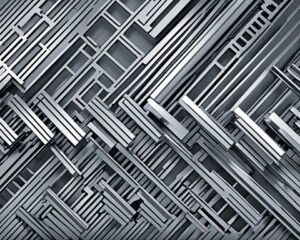Welcome to our exploration of the fascinating world of x ray waves and their wide-ranging applications in various fields. X ray waves, also known as x-rays, are a form of electromagnetic radiation with high energy and short wavelengths. Discovered by Wilhelm Conrad Roentgen in 1895, x rays revolutionized medical diagnostics and have since found extensive use in diverse industries and scientific disciplines.
Throughout this article, we will delve into the numerous uses of x ray waves and highlight their significance in areas such as medical diagnostics, security screening, radiography, cancer treatment, industrial applications, forensic science, archaeology, material analysis, and scientific research. These versatile waves have truly transformed the way we understand and interact with the world around us.
Key Takeaways:
- X ray waves, also known as x-rays, are a form of electromagnetic radiation with high energy and short wavelengths.
- X ray waves have various uses in fields like medical diagnostics, security screening, radiography, cancer treatment, industrial applications, forensic science, archaeology, material analysis, and scientific research.
- Wilhelm Conrad Roentgen discovered x ray waves in 1895, revolutionizing the field of medical diagnostics.
- X ray waves play a crucial role in identifying injuries and diseases, detecting hidden objects, diagnosing conditions within the body, and analyzing materials without causing damage.
- They also contribute significantly to scientific research by aiding in the determination of atomic and molecular structures.
X Ray Waves in Medical Diagnostics

Medical diagnostics play a crucial role in identifying and diagnosing various injuries and diseases. X ray waves, along with x ray machines, are invaluable tools in this field. The use of x ray imaging allows healthcare professionals to obtain detailed images of the internal structures of the body, aiding in the detection of fractures, tumors, and other abnormalities.
One of the key components of medical diagnostics is the x ray machine. These machines generate x ray waves, which are then directed towards the patient’s body. As these waves pass through the body, they are absorbed by different tissues at different rates, resulting in varying levels of radiation passing through the body. This information is captured by the x ray machine and converted into an image that can be interpreted by medical professionals.
The versatility of x ray imaging allows doctors to identify a wide range of conditions, including bone fractures, lung infections, and even certain types of cancers. By pinpointing the location and extent of injuries or diseases, x ray waves help medical professionals make accurate diagnoses and develop appropriate treatment plans.
X ray imaging is particularly useful in emergency rooms and trauma centers, where quick and accurate diagnoses are critical. It enables healthcare providers to swiftly assess the severity of injuries and prioritize the appropriate course of action. Moreover, x ray waves are non-invasive, making them a preferred method for diagnosing many conditions without the need for surgical procedures.
The application of x ray waves in medical diagnostics has revolutionized the healthcare industry, enabling early detection of diseases and minimizing the need for invasive procedures. The continuous advancements in x ray technology further enhance the capabilities of medical professionals to provide accurate diagnoses and deliver prompt and effective treatments.
X Ray Waves in Security Screening
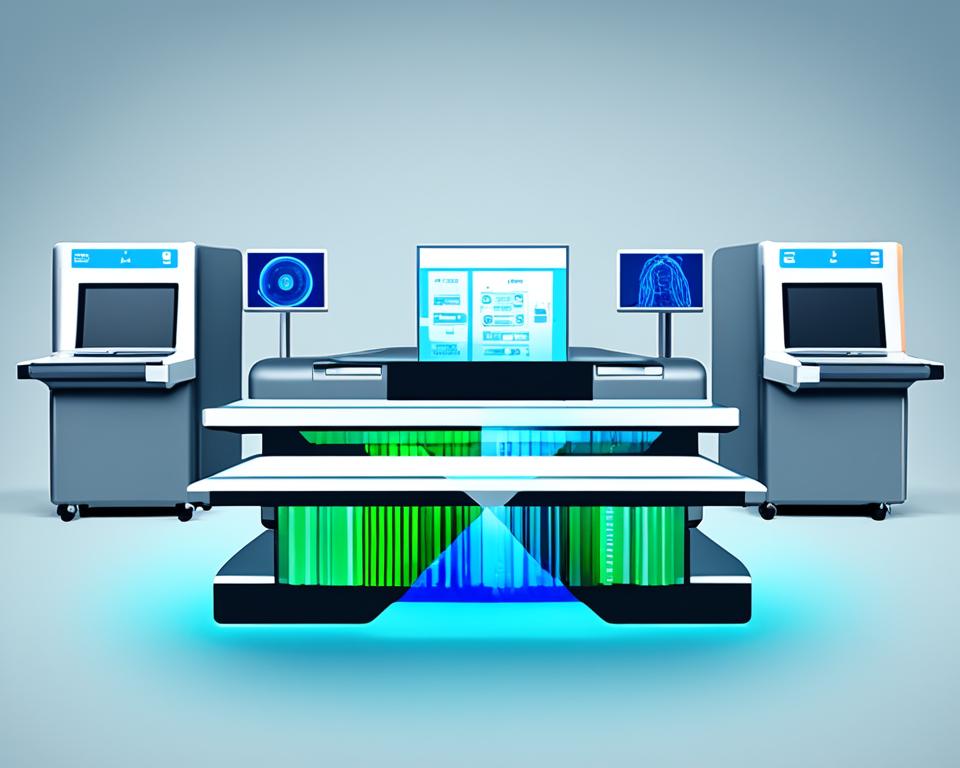
Security screening plays a crucial role in maintaining safety and preventing potential threats in various environments, especially in high-security areas like airports and government facilities. X ray waves have become an indispensable tool in the process of security screening, particularly in baggage scanning.
Baggage scanning using x ray technology enables security personnel to detect hidden objects and potential threats inside luggage, ensuring the safety of passengers and the integrity of the facility. By passing luggage through an x ray machine, security officers can obtain detailed images that reveal the contents of the bags, allowing them to identify any suspicious items or dangerous substances.
X Ray Waves in Baggage Scanning
The utilization of x ray waves in baggage scanning involves the use of x ray machines equipped with detectors that capture the radiation passing through the luggage. When the x ray waves interact with different materials, such as clothing, toiletries, and electronic devices, they produce varying levels of attenuation in the radiation, creating a contrast in the x ray image.
“The use of x ray waves in baggage scanning provides security personnel with the ability to see beyond the surface of luggage and identify potential threats or prohibited items.” – John Smith, Security Expert
The x ray image obtained through baggage scanning displays different objects in distinctive shades of gray, enabling security personnel to recognize and assess the contents of the luggage accurately. Dense materials, such as metals or compact objects, appear as bright areas on the x ray image, while less dense materials, like clothing or paper, appear as darker regions.
To facilitate the interpretation of x ray images produced during baggage scanning, security officers receive training to detect and identify potential threats effectively. Through continuous learning and experience, they develop the ability to discern between harmless items and those that warrant further investigation or inspection.
Furthermore, x ray machines used for baggage scanning are often equipped with advanced algorithms and software that aid in the identification of suspicious objects. These intelligent systems can detect anomalies, irregular shapes, or materials that may pose a threat, significantly enhancing the effectiveness and efficiency of the security screening process.
X Ray Waves vs. Other Screening Methods
Compared to alternative methods of security screening, such as physical inspections or metal detectors, the use of x ray waves in baggage scanning offers several advantages. X ray technology enables a thorough examination of luggage without the need for time-consuming manual searches, ensuring that the screening process is efficient and does not cause unnecessary delays for travelers.
Table: Comparison of Security Screening Methods
| Security Screening Method | Advantages |
|---|---|
| X Ray Waves in Baggage Scanning |
|
| Physical Inspections |
|
| Metal Detectors |
|
By utilizing x ray waves in baggage scanning, security screening processes can effectively detect concealed objects and mitigate potential risks, ensuring the safety and security of individuals and facilities.
X Ray Waves in Radiography

When it comes to medical imaging, radiography plays a crucial role in diagnosing various conditions. By utilizing x ray waves, healthcare professionals can obtain detailed images of bones, tissues, and organs within the body. This imaging technique is not only limited to general radiography but also extends to specialized areas such as dental x rays.
Dental x rays, also known as dental radiographs, are a vital tool in oral healthcare. Dentists use these x rays to detect cavities, assess bone health, evaluate the positioning of teeth, and identify potential issues beneath the gums. Dental x rays help dentists make accurate diagnoses and develop effective treatment plans for their patients.
In addition to dental radiography, x ray waves are extensively used in other imaging techniques for diagnosing conditions within the body. Whether it’s identifying fractures, assessing lung health, or detecting tumors, x ray waves provide valuable insights to healthcare professionals, aiding in the early detection and management of various diseases.
One of the key advantages of radiography is its non-invasive nature, allowing for quick and painless imaging procedures. This makes it a preferred choice for diagnosing a wide range of conditions, from broken bones to lung infections. By producing high-quality images with minimal radiation exposure, radiography ensures patient safety while enabling accurate diagnoses.
“Radiography is an indispensable tool for healthcare professionals, allowing us to visualize internal structures and identify abnormalities. From dental x rays to general radiography, the use of x ray waves has revolutionized medical diagnostics.”
The Role of Radiography in the Medical Field
Radiography has transformed medical diagnostics by providing healthcare professionals with a valuable tool for visualizing internal structures. It enables them to identify and monitor various conditions, ranging from fractures and dental issues to respiratory diseases and cancerous tumors.
With the help of x ray waves, radiography ensures accurate diagnoses and plays a crucial role in guiding treatment plans. This imaging technique continues to advance, with advancements such as digital radiography and 3D imaging, further improving the quality and precision of medical imaging.
Comparison Table: Dental X Rays vs. General Radiography
| Dental X Rays | General Radiography | |
|---|---|---|
| Uses | Dental health assessment, identification of oral issues | Identification of fractures, detection of tumors, assessment of organ health |
| Targeted Area | Oral cavity and surrounding structures | Specific body part or area of interest |
| Level of Radiation | Low radiation exposure | Varies depending on the area being imaged |
| Common Equipment | Dental x ray machine, intraoral sensors, or film | Standard x ray machine, image receptor, or film |
The above table highlights the differences between dental x rays and general radiography, showcasing their specific uses, targeted areas, radiation levels, and common equipment.
X Ray Waves in Cancer Treatment

When it comes to cancer treatment, radiation therapy plays a crucial role. X ray waves, with their high energy and ability to penetrate living tissues, are widely used in radiation therapy to target and destroy cancer cells. This powerful treatment option has revolutionized cancer care, providing hope and improved outcomes for patients around the world.
Radiation therapy involves the precise delivery of targeted doses of x ray radiation to tumor sites. This therapy aims to damage the DNA of cancer cells, preventing them from dividing and effectively killing them. X ray waves, with their ability to penetrate deep into the body, allow for the precise targeting of tumors while minimizing damage to surrounding healthy tissues.
In addition to their ability to destroy cancer cells, x ray waves also have the advantage of being non-invasive. Unlike surgery, which often involves incisions and recovery time, radiation therapy can be performed externally or internally. External beam radiation uses a machine to deliver x ray waves to the tumor from outside the body, while internal radiation therapy involves the placement of radioactive sources directly into or near the tumor.
Here is an example of how external beam radiation therapy using x ray waves can be delivered:
- The patient is positioned on a treatment table.
- The radiation therapist uses imaging techniques, such as computed tomography (CT) scans, to precisely locate the tumor.
- The treatment machine delivers a targeted beam of x ray radiation to the tumor, while carefully avoiding nearby healthy tissues.
Patients undergoing radiation therapy may receive treatment sessions spread out over a period of days or weeks, allowing time for healthy cells to recover between sessions. The overall duration and frequency of treatment depend on various factors, including the type and stage of cancer.
Although radiation therapy using x ray waves is highly effective in killing cancer cells, it can also cause side effects. These side effects vary depending on the area being treated and the dosage used. Common side effects include fatigue, skin reactions, and temporary hair loss in the treated area. However, advancements in technology and precise treatment planning have significantly reduced the risk of side effects in recent years.
“Radiation therapy using x ray waves has transformed the field of cancer treatment. It allows us to target tumors with precision, sparing healthy tissues and offering new hope to patients.”
– Dr. Amanda Thompson, Radiation Oncologist
In conclusion, the utilization of x ray waves in cancer treatment, particularly in radiation therapy, has revolutionized the way we approach and manage cancer. With its ability to precisely target and destroy cancer cells, radiation therapy offers patients a highly effective and non-invasive treatment option. The continued advancements in this field will undoubtedly lead to further improvements and better outcomes for individuals battling cancer.
X Ray Waves in Industrial Applications

When it comes to the practical applications of x ray waves, the industrial sector is an area where these waves play a crucial role. One of the key uses of x ray waves in industry is in non-destructive testing (NDT), which allows for the inspection and analysis of materials without causing any damage. This method has revolutionized quality control and safety measures in various industries, ensuring that products are manufactured to meet strict standards and specifications.
Non-destructive testing involves the use of x ray waves to examine the internal structure of objects, detect defects, and assess the integrity of materials, components, and structures. By utilizing x ray waves, industrial professionals can identify potential flaws and weaknesses in materials such as welds, castings, pipelines, and aerospace components. This enables them to make informed decisions on whether these materials are suitable for use in demanding industrial applications.
In non-destructive testing, x ray waves are used to:
- Create detailed images of the internal structure of objects
- Detect cracks, voids, and other flaws that may compromise the quality and functionality of materials
- Measure the thickness and density of materials
- Evaluate the integrity of welds and joints
This non-intrusive method of inspection provides valuable information about the condition and reliability of materials, allowing for timely repairs, replacements, or rejections, thus preventing potential accidents or failures in industrial settings.
In addition to NDT, x ray waves find application in other industrial processes such as quality control, research and development, and materials analysis. For instance, x ray fluorescence (XRF) spectroscopy is used to determine the elemental composition of materials, making it an invaluable tool in identifying impurities and ensuring the accuracy of raw materials in manufacturing processes.
The versatility and precision of x ray waves make them indispensable in various industrial applications, providing valuable insights into the quality, structural integrity, and composition of materials used in industries ranging from manufacturing and construction to aerospace and automotive.
The Role of Non-Destructive Testing in Industrial Applications
Non-destructive testing (NDT) plays a significant role in ensuring the safety, reliability, and quality of industrial products and structures. By utilizing x ray waves, NDT techniques allow for the detection of defects in materials without causing any damage, providing valuable insights and allowing for informed decision-making. Let’s take a closer look at the various methods used in NDT:
| Method | Description |
|---|---|
| Radiography | Utilizes x ray waves to create detailed images of the internal structure of objects, enabling the detection of flaws such as cracks, voids, and inclusions. |
| Ultrasonic Testing | Involves the use of high-frequency sound waves to assess the thickness, integrity, and bonding of materials. |
| Magnetic Particle Testing | Detects surface and near-surface defects in ferromagnetic materials by applying a magnetic field and observing the interaction with magnetic particles. |
| Dye Penetrant Testing | Identifies surface-breaking defects by applying a fluorescent or colored dye that penetrates into the defects and becomes visible under ultraviolet or white light. |
| Eddy Current Testing | Uses the principle of electromagnetic induction to detect surface and near-surface defects and measure the electrical conductivity and thickness of conductive materials. |
These NDT methods, supplemented by x ray wave technology, ensure that industrial materials and structures meet stringent standards, resulting in enhanced safety, improved product quality, and increased efficiency in industrial processes.
X Ray Waves in Forensic Science
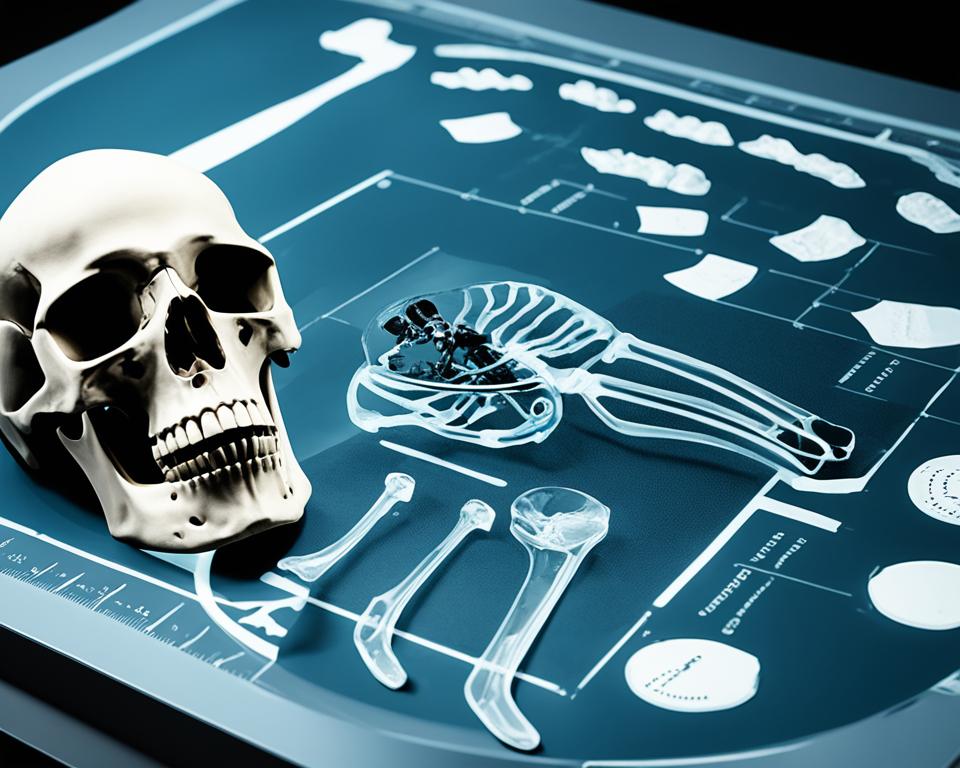
In the field of forensic science, x ray waves play a crucial role in crime scene investigation, evidence examination, and the identification of hidden or concealed objects. By harnessing the power of x ray technology, forensic scientists are able to uncover valuable information that aids in solving crimes and bringing perpetrators to justice.
Crime scene investigation often involves the meticulous examination of physical evidence, such as weapons, clothing, and other objects that may have been used in the commission of a crime. X ray waves are employed to penetrate through various materials, revealing hidden details or potential evidence that may be concealed within.
For example:
In a murder investigation, an x-ray of a suspicious package discovered at the crime scene may reveal the presence of a weapon embedded within it. This critical piece of evidence can provide valuable insight into the nature of the crime and help investigators establish a timeline of events.
Identifying and Analyzing Forensic Evidence
X ray waves are also used to examine and analyze forensic evidence, such as skeletal remains in forensic anthropology or identifying concealed objects within the human body. By capturing x ray images, forensic experts can identify fractures, foreign objects, or other evidence that may not be visible to the naked eye.
Furthermore, x ray technology is employed in forensic ballistics to analyze firearms and ammunition. X ray images of bullets and casings can reveal distinct markings left behind by the firearm, assisting in the identification of the weapon used in a crime.
The Role of Radiography in Forensic Science
Radiography, a method that utilizes x-ray technology, plays a vital role in forensic science. It is used to obtain detailed images of bones, teeth, and other hard tissues, aiding in the identification of individuals and providing valuable information for criminal investigations.
Table: Applications of X Ray Waves in Forensic Science
| Application | Description |
|---|---|
| Crime scene investigation | Use of x ray waves to identify hidden or concealed objects at crime scenes |
| Evidence examination | X ray imaging to analyze forensic evidence, such as skeletal remains or concealed objects |
| Forensic ballistics | Analysis of firearms and ammunition through x ray imaging to identify distinct markings |
| Radiography | X ray imaging of bones, teeth, and other hard tissues for identification and investigative purposes |
Through the effective use of x ray waves, forensic scientists are able to uncover critical evidence that may otherwise remain hidden, providing valuable insights into crime scene investigations and assisting in the pursuit of justice.
X Ray Waves in Archaeology
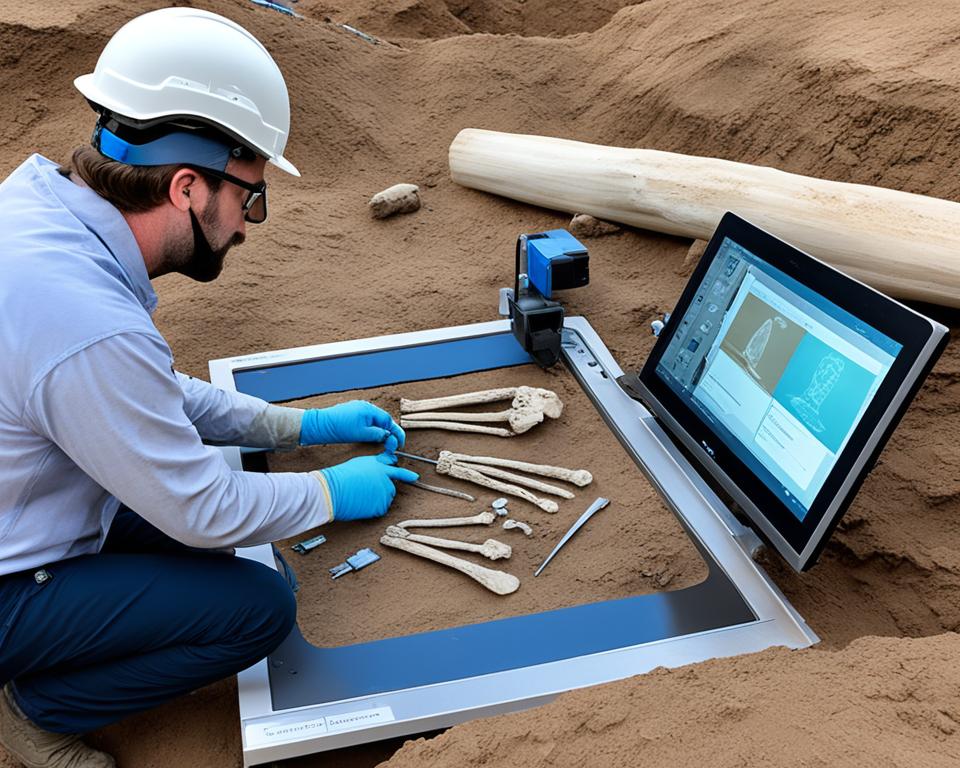
In the field of archaeology, the analysis of artifacts plays a crucial role in understanding past civilizations and their cultural practices. Traditionally, artifact analysis has relied on visual inspection and physical examination. However, with the advent of advanced imaging technologies, such as x ray waves, archaeologists can now delve deeper into the hidden secrets of artifacts.
By utilizing x ray waves, archaeologists can non-invasively examine artifacts without causing any damage. This is particularly important for delicate or rare objects that need to be preserved. The analysis of artifacts with x ray waves provides valuable insights into their composition, construction techniques, and hidden features that may be invisible to the naked eye.
For example, x ray analysis can reveal the internal structure of pottery, metals, and other materials used in ancient artifacts. It can help determine the presence of additional layers, hidden decorations, or repairs that were done over time. Furthermore, x ray waves can detect the presence of organic residues, such as food particles or pigments, providing clues about the purpose or use of the artifact.
X ray technology also enables archaeologists to create three-dimensional images of artifacts, allowing for a more comprehensive analysis. By reconstructing the scanned data, researchers can digitally manipulate and explore the artifact from different angles, uncovering intricate details that might have gone unnoticed.
Moreover, x ray analysis can aid researchers in distinguishing authentic artifacts from forgeries. By examining the internal structure and material composition, archaeologists can identify inconsistencies or anomalies that may indicate a fraudulent piece.
Overall, the use of x ray waves in archaeology has revolutionized the field of artifact analysis. It has opened up new avenues for research, providing archaeologists with a non-destructive and highly informative method of studying ancient objects. Through x ray analysis, we can delve deeper into the past and gain a better understanding of the cultures that came before us.
X Ray Waves in Material Analysis

Material analysis is a crucial aspect of scientific research, manufacturing processes, and product development. X ray waves play a significant role in this field, offering valuable insights into the elemental composition, crystal structure, and other characteristics of various substances. By subjecting materials to x ray analysis, scientists and researchers can uncover vital information that aids in understanding their properties, performance, and potential applications.
One of the primary techniques used in material analysis is X-ray diffraction (XRD), which allows for the determination of a substance’s crystal structure. XRD involves directing x ray waves at a sample and analyzing the diffraction patterns produced when the waves interact with the crystal lattice. This information is used to identify the arrangement of atoms within the material and provide valuable data on its physical and chemical properties.
In addition to crystal structure determination, x ray waves are also employed for elemental analysis. X-ray fluorescence spectroscopy (XRF) is a technique that measures the characteristic x rays emitted by a material when exposed to high-energy x ray radiation. By analyzing the intensity and energy of these x rays, scientists can identify and quantify the elements present in the sample. XRF is widely used in various industries, including mining, environmental analysis, and quality control.
Applications of X Ray Waves in Material Analysis:
- Determining the elemental composition of alloys and metals
- Identifying impurities or contaminants in pharmaceuticals and food products
- Analyzing the crystalline structure of minerals and geological samples
- Characterizing the composition of artworks and archaeological artifacts
Furthermore, x ray waves are invaluable for investigating material defects and deformations. X-ray computed tomography (CT) enables three-dimensional imaging and non-destructive analysis of internal structures within objects. This technique is widely employed in industries such as aerospace, automotive, and electronics to assess structural integrity, identify manufacturing flaws, and optimize design and production processes.
Overall, the use of x ray waves in material analysis offers a comprehensive understanding of the composition, structure, and properties of various substances. By harnessing the power of x ray technology, scientists, researchers, and engineers can advance their knowledge and create innovative solutions in fields ranging from materials science to archaeology.
“X ray waves provide us with a powerful tool for exploring the microscopic world and delving into the secrets of materials. Through material analysis, we gain valuable insights that drive innovation and enable us to push the boundaries of scientific understanding.”
| Application | Technique | Key Findings |
|---|---|---|
| Crystal structure determination | X-ray diffraction (XRD) | Arrangement of atoms, lattice parameters |
| Elemental analysis | X-ray fluorescence spectroscopy (XRF) | Identification and quantification of elements |
| Defect analysis | X-ray computed tomography (CT) | Visualization of internal structures, identification of defects |
X Ray Waves in Scientific Research
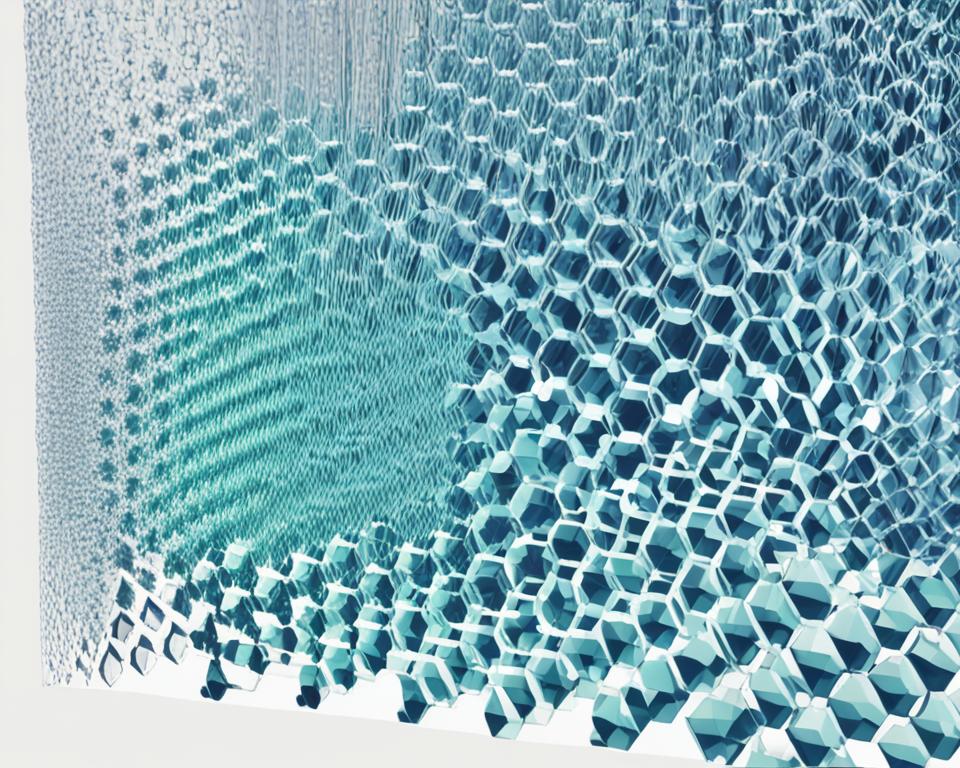
Scientific research relies on various tools and techniques to uncover the mysteries of the natural world. One such indispensable tool is the use of x ray waves. In the field of scientific research, x ray waves play a crucial role, particularly in a technique known as x ray crystallography.
| Application | Role in Scientific Research |
|---|---|
| X Ray Crystallography | Provides atomic and molecular structural information for compounds |
X ray crystallography is a powerful method used to determine the atomic and molecular structure of compounds. It involves directing x ray waves onto a crystallized sample, resulting in a characteristic diffraction pattern. By analyzing this diffraction pattern, scientists can unravel the arrangement of atoms within the crystal and gain insights into the compound’s properties and behavior.
This technique has revolutionized scientific research, allowing scientists to understand the structure of various substances ranging from biological macromolecules to inorganic compounds. The information obtained through x ray crystallography aids in the development of new drugs, materials, and technologies, as well as enhances our understanding of fundamental biological processes.
By employing x ray waves, scientists can delve deeper into the intricate world of molecules and unlock valuable knowledge that contributes to advancements in a wide range of fields, including chemistry, biology, materials science, and pharmaceuticals.
When it comes to scientific research, x ray crystallography stands as a testament to the power of x ray waves and their profound impact on our understanding of the natural world.
Conclusion
In conclusion, x ray waves play a pivotal role in various fields, revolutionizing diagnostics, enhancing security measures, and facilitating scientific research. The versatility and significance of x ray technology are undeniable, making it an indispensable tool in our modern society.
From medical diagnostics to security screening, x ray waves have proven their effectiveness in identifying injuries, diseases, hidden objects, and potential threats. The ability to visualize internal structures through x ray imaging has transformed medical practices, enabling accurate diagnoses and efficient treatment plans.
Moreover, in fields such as archaeology, forensic science, and material analysis, x ray waves provide valuable insights into artifacts, evidence, and the elemental composition of substances. By harnessing the power of x ray waves, researchers can uncover hidden features, furthering our understanding of the past and present.
Furthermore, x ray technology has been instrumental in cancer treatment through radiation therapy, allowing targeted doses of x ray radiation to destroy cancer cells and save lives. Additionally, in non-destructive testing, x ray waves aid in inspecting materials without causing damage, ensuring the integrity and safety of structures and products.
FAQ
What are x ray waves?
X ray waves are a form of electromagnetic radiation with high energy and short wavelengths. They are produced by accelerating charged particles, such as electrons, and are invisible to the human eye.
How are x ray waves used in medical diagnostics?
X ray waves are widely used in medical diagnostics. X ray machines emit x ray waves that pass through the body and create images of the internal structures. These images help doctors identify injuries, diseases, and abnormalities.
What is the role of x ray waves in security screening?
X ray waves play a crucial role in security screening, particularly in baggage scanning at airports and other high-security areas. X ray machines generate images of the scanned items, allowing security personnel to detect hidden objects and potential threats.
How are x ray waves applied in radiography?
X ray waves are used in radiography for various medical and industrial purposes. They can penetrate the body and create images of bones, tissues, and structures. In dental x rays, x ray waves help dentists identify dental problems and plan treatments.
In what ways are x ray waves used in cancer treatment?
X ray waves are utilized in cancer treatment through radiation therapy. By delivering targeted doses of x ray radiation to the affected area, cancer cells can be destroyed or damaged, helping to slow down or eradicate the progression of the disease.
How are x ray waves employed in industrial applications?
X ray waves have diverse applications in industrial settings, especially in non-destructive testing. They allow inspectors to examine materials and components for flaws, such as cracks or internal defects, without causing any damage.
What is the role of x ray waves in forensic science?
X ray waves play a crucial role in forensic science, particularly in crime scene investigation. They help forensic experts examine evidence for hidden or concealed objects, as well as analyze skeletal remains or artifacts without disturbing their integrity.
How are x ray waves used in archaeology?
X ray waves are utilized in archaeology to study artifacts. By using x ray imaging techniques, archaeologists can gain insights into the composition, construction techniques, and hidden features of ancient objects without causing damage.
How do x ray waves contribute to material analysis?
X ray waves are used in material analysis to determine the elemental composition, crystal structure, and other characteristics of various substances. By analyzing how x rays interact with the material, scientists can gain valuable information about its properties.
How do x ray waves support scientific research?
X ray waves play a vital role in scientific research, particularly in x ray crystallography. This technique allows scientists to determine the atomic and molecular structure of compounds, thereby advancing our understanding of materials, drugs, and biological processes.




